Do you have a question about the Scheppach IGT2500 and is the answer not in the manual?
| Fuel type | Gasoline |
|---|---|
| Noise level | 64.1 dB |
| Rated power | 2000 W |
| Rated voltage | 230 V |
| Ignition system | Manual |
| Rated DC voltage | 12 V |
| Number of outlets | 2 |
| Fuel tank capacity | 4.1 L |
| Engine displacement | 80 cm³ |
| Engine number of strokes | 4 |
| Castor wheels | No |
| Product color | Blue |
| Oil tank capacity | 0.35 L |
| Carrying handle(s) | Yes |
| Depth | 520 mm |
|---|---|
| Width | 270 mm |
| Height | 440 mm |
| Weight | 17500 g |
Explains symbols for general warnings, hazards, and safety precautions.
Symbols related to personal protective equipment and electrical voltage.
Symbols concerning fuel handling, fire prevention, and maintenance safety.
Essential safety precautions for operating the generator.
Explains the meaning of DANGER, WARNING, CAUTION, and NOTE alerts.
Maintaining a safe work area and considering environmental conditions.
Ensuring user awareness and proper device application.
Safe practices for storing fuel and adding it to the generator.
Key rules for safe operation, modifications, and positioning.
Warnings about exhaust gases, flammability, electrical contact, and noise.
Guidelines for generator power output based on conditions.
Rules for load connection, disconnection, and engine stopping.
Safety rules for performing maintenance, including part usage and inspections.
Steps to take before maintenance, like disconnecting the ignition cable.
Avoid maintenance or cleaning while the machine is running.
Do not use flammable solvents for cleaning.
Emphasizes user concentration and outlines residual risks.
Details on electrical, thermal, noise, and substance-related dangers.
Measures for fire prevention and actions in case of an emergency.
Key technical details of the generator and its engine.
Information on operating modes and measured noise emission levels.
Presents sound pressure and sound power level data.
Advises wearing ear-muffs due to noise impact.
Procedures for unpacking and checking the generator for damage.
Essential checks and attention points before starting the engine.
Detailed steps for verifying the engine oil level.
Instructions for safely filling the fuel tank.
Specifies recommended fuel and safe fuel handling practices.
Warnings regarding refueling, flammability, and explosion risks.
Step-by-step instructions for starting the engine.
Procedures for safely stopping the engine.
Explanation of the oil warning light indicator.
Function and meaning of overload and operating indicators.
Operation of the energy saving switch for fuel efficiency.
Rules for safe use of electrical cables and avoiding mains connection.
Instructions for grounding the generator housing for safety.
How to use the 12V DC output for charging a battery.
Safety precautions to follow during maintenance.
Detailed steps for changing the engine oil.
Instructions for cleaning and changing the air filter.
How to check, clean, and visually inspect the spark plug.
Measuring the gap and correctly installing the spark plug.
Identifies the spark plug as a consumable wear part.
Guidelines for cleaning the generator unit after use.
Steps for safe long-term storage of the generator.
Procedures to follow when taking the generator out of storage.
Safety warnings and procedures for transporting the generator.
Information on proper disposal according to the WEEE directive.
Solutions for common issues when the engine fails to start.
Remedies for problems with low or no voltage output.
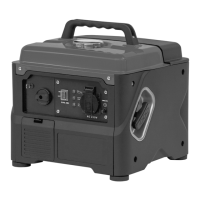
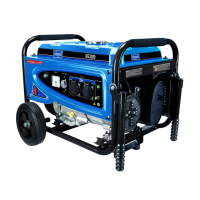
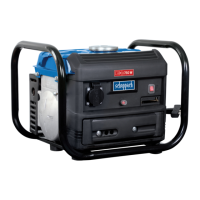
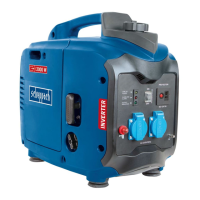
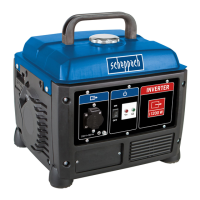
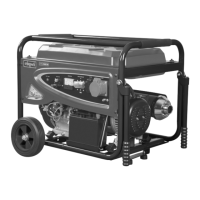
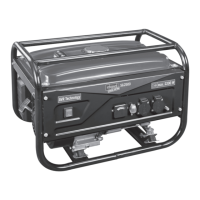
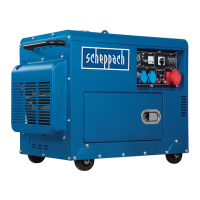
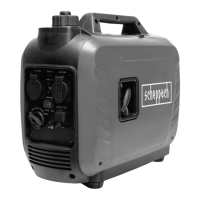
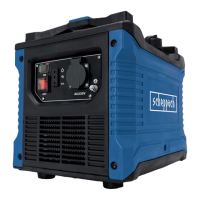
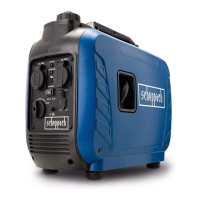
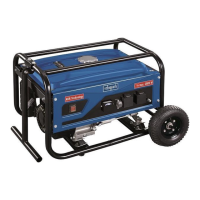
